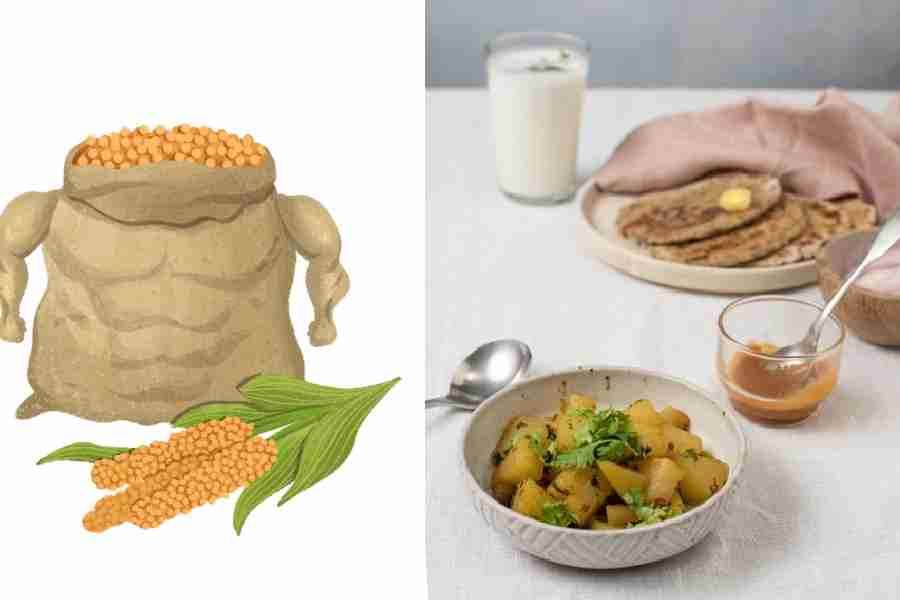The last decade has seen a resurgence in health awareness and appreciation of seasonal, regional and native foods. Urban populations are becoming more aware of the importance of ingesting whole grains and natural foods for optimum health. Among the diverse alternatives available, millets have emerged as an excellent choice, especially for children. They have numerous fitness benefits and can cater to family members of all ages. Millets are flexible, delicious and readily available for including in regular meals.
CHOICE OF MILLETS
A collection of small-seeded grasses, millets have been cultivated for hundreds of years. In addition to being high-fibre and vitamin-rich, one of the key blessings of millets is their gluten-unfastened nature, making them a first-rate preference for people with gluten intolerance or celiac disease. Pearl (bajra) millet, finger (ragi) millet and sorghum (jowar) are the widely known and used millets that have been classified as neutral grains by the millet man of India, Kharar Valli.
Rice and wheat, due to their base and commercial nature, are sometimes seen as negative grains in comparison. Ragi and bajra offer much-needed iron and high fibre content in a child’s diet. However, browntop, barnyard and little millet can further enhance the iron absorption, fibre and essential protein content of meals; almost eight to nine times in comparison to wheat and rice.
A child’s gut can be exposed and trained early on to digest and appreciate these grains such that they eat in a regulated manner and the glucose release from the grain is well controlled by the fibre. Other known millets are foxtail, kodo, great and proso millet that are readily available to purchase and use in porridge, pulao, rotis, vermicelli and bread-making.
EXCEPTIONAL HEALTH ADVANTAGES
For households, millets offer quite a number of benefits. Firstly, they’re quite versatile and can be utilised in numerous dishes. Millets can be cooked as a wholegrain, ground into flour, or even used to make porridge or cakes. This versatility ensures that families can incorporate millets into their food seamlessly, including as a pleasing alternative in their weight-loss programme.
All the above millets are a superb supply of vital vitamins like iron, calcium, magnesium, and phosphorus. These minerals play a critical role in the growth of our children, helping build strong bones and teeth, and a robust immune system. The high fibre content in millets also aids digestion and forestalls constipation, a usual condition in urban children.
All millets have a low glycemic index, especially jowar, which means that they launch glucose into the bloodstream slowly, ensuing in sustained energy release and check sudden spikes in blood sugar levels. This quality is especially useful for kids because it helps maintain their energy reserves all through the day, reducing fatigue.
Barnyard and browntop millet additionally contain antioxidants, which help in fighting free radicals and decreasing the hazard of continual illnesses. Those antioxidants protect the body’s cells from damage and improve average well-being. These two millets are recognised for their high protein content, making them an extraordinary preference for vegetarian and vegan households who struggle to satisfy their protein requirements.
Another crucial gain of millets is that they’re environmentally friendly. Millets require minimum water and can develop in dry conditions, making them a sustainable crop. Families can contribute to environmental conservation and reduce their carbon footprint by consuming more millets.
EASY INCORPORATION IDEAS
A Superfood a Day is your answer to incorporating millets into your kitchen with immense versatility, almost making it a culinary adventure. Millets can be used to make a variety of dishes, which include pilaf, porridge, salads, pancakes, or even desserts. While experimenting with specific recipes, families can introduce interesting and nutritious meals catering to the child’s taste buds while nourishing their bodies.
When introducing millets to youngsters, it is vital to begin progressively and be innovative with the presentation. Mixing millets with acquainted ingredients like rice or incorporating them into favourite dishes like pasta or muffins can help youngsters grow to be aware of their taste and texture. Over time, they will grow to enjoy the unique flavours and enjoy the wellness that millets offer.
Millets are true superfoods, specifically for households and children. Their nutritional cost, versatility, and nature have led to the world recognising this year as the United Nations Year of the Millet. It is a sustainable world nutrition solution and promotion as households can ensure that their children receive a wide variety of vital nutrients, sustain their energy levels, and promote standards of fitness.
Contests, advertising, packaging, chef specials in restaurants and many food promotions now talk about ragi-based pizza bases, or jowar flour-based cakes or the most innovative millet culinary discovery. From a global, restaurant or home kitchen perspective, millets have arrived in a big way and will trickle into every food avenue of our life and tastes. Let’s embrace the goodness of millets and embark on an adventure towards a more healthy and nutrition-aware way of life for our families.
Abhilasha Sethia is an F&B consultant and chef who is launching her cookbook for growing children soon with A SuperFood A Day. Her co-author Vidhi Beri is a health transformation coach with a decade of experience in maternal and child nutrition and wellness. A Superfood A Day is their offering to children and families for fresh and flavourful wellness.

Aloo Bajra Roti served with Kachche Papita (raw papaya) Ki Sabzi
(left) Millets are true superfoods, specifically for households and children. Their nutritional cost, versatility, and nature have led to the world recognising this year as the United Nations Year of the Millet. It is a sustainable world nutrition solution and promotion as households can ensure that their children receive a wide variety of vital nutrients, sustain their energy levels, and promote standards of fitness.
